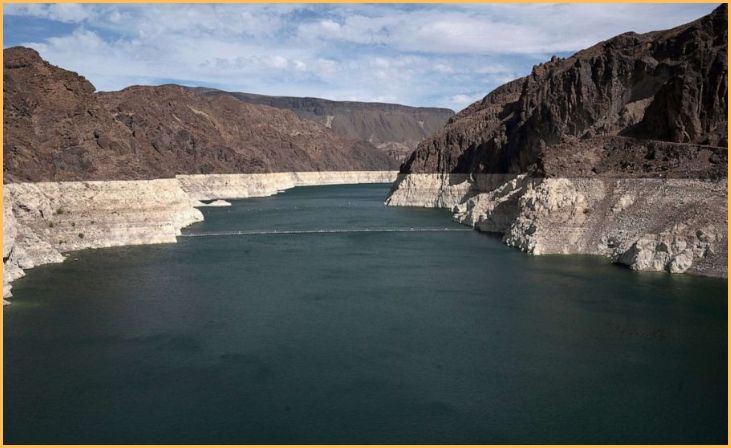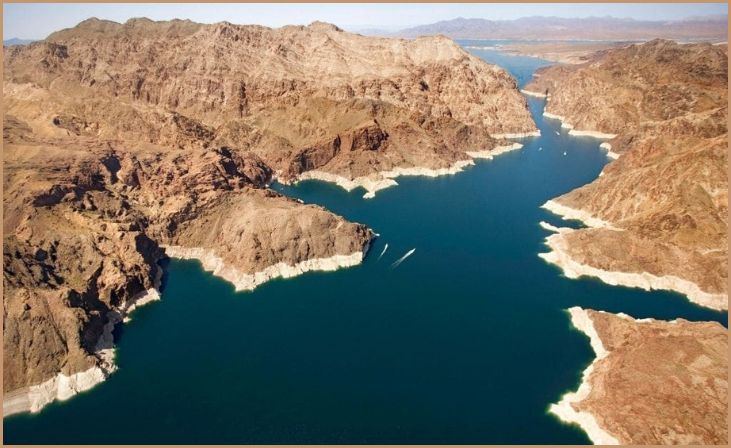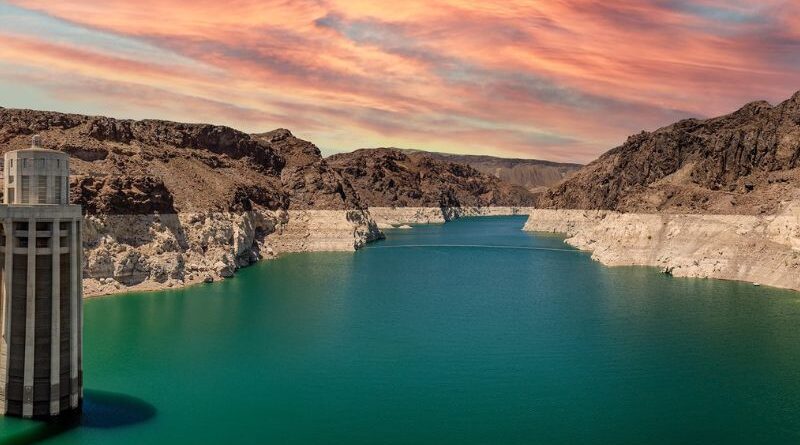Lake Mead Water Levels Change – Lake Mead, situated along the Colorado River, stands as one of the largest reservoirs in the United States, serving as a crucial water source for millions of people. Recent reports have brought attention to a concerning trend – the water levels at Lake Mead are undergoing unprecedented changes. This blog aims to explore the causes and consequences of this phenomenon, while also delving into potential solutions to address the challenges posed by these shifting water levels.
Overview Of Lake Mead

Lake Mead, located on the Colorado River, is a massive reservoir formed by the Hoover Dam. This iconic body of water stretches across the border of Arizona and Nevada, serving as a crucial source of water and power for the southwestern United States. The lake, named after Elwood Mead, who played a key role in the development of the Hoover Dam, is the largest reservoir in the United States by volume when at full capacity. One notable feature of Lake Mead is its stunning scenery, surrounded by the stark beauty of the Mojave Desert. The lake’s shoreline spans over 700 miles, offering ample opportunities for outdoor recreation, including boating, fishing, and hiking. The crystal-clear waters are a haven for anglers, providing a habitat for a variety of fish species, such as striped bass, catfish, and rainbow trout.
Despite its recreational allure, Lake Mead faces significant challenges related to water levels. The lake’s water levels have fluctuated over the years due to factors like prolonged droughts and increased water demand. Persistent drought conditions in the region have led to visible “bathtub rings” along the shoreline, illustrating the gradual decline in water levels. The Hoover Dam, a marvel of engineering completed in 1936, not only tames the Colorado River to create Lake Mead but also generates hydroelectric power. This power generation contributes to the energy needs of multiple states, highlighting the lake’s vital role in supporting both urban centers and agriculture in the arid southwest.
Read Also: 10 Iconic Aircraft That Have Stood the Test of Time
Understanding the Changing Water Levels:

The complex dynamics that govern the water levels at Lake Mead are shaped by a confluence of influential factors, the most important of which are precipitation, drought conditions, and water consumption. Over the course of the last ten years, the region has been challenged by severe droughts, which has resulted in a significant disparity between decreased water inflow and increased water loss through evaporation. In light of the fact that these combined factors have emerged as formidable contributors to the ongoing decline in water levels at Lake Mead, the implementation of effective water management strategies is presented with a significant challenge.
Consequences for the Environment:
The fluctuating water levels in Lake Mead have repercussions that extend far beyond the reservoir itself, having an effect not only on the natural environment but also on the communities that are located in close proximity to it. The decreasing water levels disrupt the delicate equilibrium of the ecosystem, which in turn has a negative impact on the habitats of wildlife, the quality of the water, and the overall health of the lake. In addition, the diminishing availability of water poses a direct threat to the viability of extremely important industries across the region, including agriculture, the generation of hydropower, and recreational activities.
Implications for Water Supply:
Lake Mead operates as an essential water supply for a number of states, including Arizona, Nevada, California, and Mexico, among others. The ongoing decline in water levels has significantly increased the level of uncertainty that is associated with the availability and dependability of the water supply. This presents a formidable obstacle for those in charge of water management and policymaking, and it is imperative that they investigate novel approaches in order to satisfy the ever-increasing requirements of a population that is rapidly growing in the regions that are impacted.
Potential Solutions

Tackling the multifaceted challenges posed by the evolving water levels at Lake Mead demands a comprehensive and forward-thinking approach. Consider the following potential solutions:
a) Water Conservation:
One of the most important things that can be done to alleviate the strain that is being placed on Lake Mead’s limited water resources is to make a concerted effort to encourage individuals, industries, and agricultural sectors to adopt water-saving practicing.
b) Diversification of Water Sources:
For the purpose of reducing reliance on Lake Mead as a source of water supply and improving the overall resilience of water resources, it is a viable strategy to investigate alternative water sources such as groundwater, recycled water, and desalination.
Read Also: 7 Legendary Sports Cars That Redefined Speed And Power
c) Improved Water Management:
The implementation of advanced water management strategies, which may include enhanced monitoring capabilities, sophisticated forecasting methods, and collaborative water-sharing agreements among states, has the potential to make water allocation more efficient and effectively mitigate the negative effects of prolonged drought conditions.
Conclusion
The changing water levels at Lake Mead serve as a stark reminder of the challenges posed by climate change and increasing water demand. In the face of unprecedented environmental shifts, stakeholders, policymakers, and communities must unite to find sustainable solutions. Prioritizing water conservation, exploring alternative sources, and enhancing water management practices are crucial steps towards ensuring the long-term health and resilience of Lake Mead and its surrounding communities. It is imperative that we act now to protect this invaluable resource for future generations.
FAQs
The changing water levels at Lake Mead are influenced by a combination of factors, including precipitation, drought conditions, and water consumption. Over the past decade, the region has experienced severe droughts, leading to reduced inflow and increased evaporation, contributing to the decline in water levels.
Fluctuating water levels have extensive consequences for both the environment and communities. These changes disrupt the delicate balance of the ecosystem, affecting wildlife habitats, water quality, and the overall health of the lake. Additionally, reduced water availability jeopardizes the sustainability of agriculture, hydropower generation, and recreational activities in the region.







